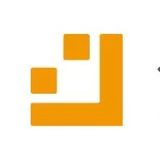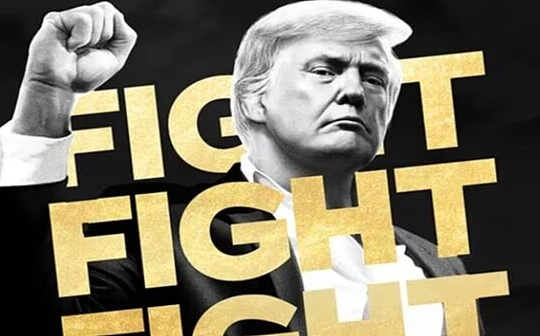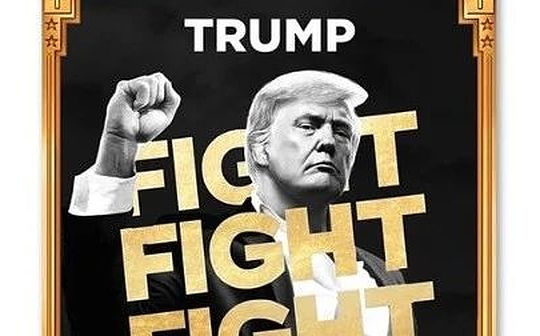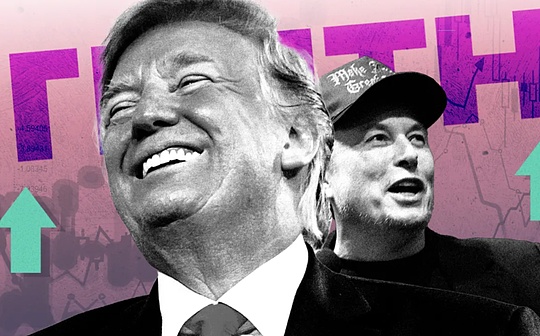69 trends in DAO design in 2025

Reprinted from jinse
01/20/2025·3MTranslator 's Foreword
Decentralized Autonomous Organizations (DAOs) are rapidly emerging and becoming a key force in reshaping global governance and resource allocation. More and more innovative thinking and design models are shaping the future of DAOs. This article is the latest research result of Kevin Owocki, who describes 69 trends in DAO design in 2025. These trends cover everything from AI integration, privacy protection, capital allocation to decentralized governance. This article can not only provide practical ideas for DAO designers, but also stimulate more discussions and practices about decentralized autonomy, innovative governance and public goods funding.
text
I conducted some simple research on DAO design trends in 2025 ( https://x.com/owocki/status/1880003004365173059 ). Here are some of my findings.
I hope these contents can provide useful reference for DAO designers in 2025:)
AI integration
1. AI x DAO
AI x DAO refers to the integration of artificial intelligence into the operation of DAO to perform tasks such as treasury management, proposal analysis, and information flow. AI agents can process massive amounts of data and make decisions or provide recommendations based on predefined criteria and historical patterns. AI agents can operate continuously and potentially make more objective decisions than human governors.
2. AI agent governance assistance
AI makes governance processes more transparent and efficient by providing clear, data-driven insights into voting patterns, member engagement, and proposal impact. AI can also help democratize governance participation by compressing complex contextual information into digestible summaries, making governance updates more accessible to all members.
3. AI circuit breaker
The AI circuit breaker is a governance control mechanism used to limit the behavior of AI systems and prevent potential problems from occurring. This kind of system can automatically suspend or limit the operation of AI based on trigger conditions, thereby ensuring that the application of AI in DAO is safer.
4. AI proxy
AI proxy is a type of artificial intelligence system that can participate in governance decisions on behalf of token holders. They can analyze proposals, track voting patterns, and make decisions based on preset criteria, driving the development of more complex and automated governance systems.
5. AI for design space exploration
AI agents greatly improve the efficiency of design space exploration in infinitely complex environments, accelerating the innovation process by automatically generating and evaluating diverse architectural configurations. With massive data sets, contextual windows, and computing power, AI can quickly optimize designs around the clock, identifying the best solutions more efficiently than traditional human methods. This not only speeds up the design process but also reduces the costs associated with manual exploration, enabling more innovative and cost-effective results.
Example : InfiniteRegen.AI
6. AI is used for information flow
AI and large language models (LLMs) can simplify the flow of information in DAOs by summarizing discussion or meeting content and highlighting key topics or points of the content for quick reference by other members. At the same time, they can analyze members' roles and interests to provide customized information, ensuring that each user only receives relevant updates. In addition, the AI-driven knowledge graph can map the DAO's resources, discussions, and contributors, enabling the right people to be connected to the right information at the right time.
7. Application of AI in new member onboarding and member management
AI tools are used to streamline the onboarding process in DAOs by reading resumes, assessing new members' qualifications, and even suggesting roles based on skills and historical performance data. This application reduces human bias and accelerates the integration process of new members into the DAO.
8. Capital allocation on the AI chain
AI agents can make retrospective capital allocations more efficiently by integrating data from past funding rounds, proposals, and performance metrics. They use advanced analytics to identify underfunded but impactful projects and recommend optimal resource allocation. By automating proposal review and prioritizing according to DAO goals, AI ensures that the allocation of funds is both efficient and transparent.
- DAO management AI
The DAO oversees the development of AI to ensure the ethics or consistency of AI practices. This could involve community-driven governance of AI research and deployment, which could ultimately lead to safer and more responsible AI systems.
10. Swarm intelligence
AI is being tested as a connector between DAOs, agents and humans, creating a form of swarm intelligence where different entities are able to share knowledge, communicate and coordinate more efficiently, thereby enabling more efficient collective decision-making than a single member can.
financial mechanism
11. Guarantee contract
Guarantee contracts create mechanisms for coordinating group action by ensuring that participants will participate only if enough people participate. These contracts help solve coordination problems and facilitate collective action, and are particularly useful for funding public goods or organizing collective efforts.
12. COCM (Connection Oriented Cluster Matching) Quadratic Funding
The algorithm enhances traditional quadratic funding models by identifying and reducing collusion among donors. It analyzes clusters of users based on shared attributes or behavior to detect coordinated groups trying to unfairly influence grant outcomes. By adjusting matching funds to account for these patterns of collusion, COCM ensures that resources are allocated more equitably and efficiently to projects that have genuine community support.
Example : Gitcoin Grants Stack
13. Reserves
Reserves provide a treasury management system with specific rules, including rules for the allocation and expenditure of funds. It can include features such as spending limits, approval requirements, and automatic allocation. This system helps maintain fiscal discipline while ensuring resources are available when needed.
14. Deepfunding
Deepfunding is an initiative that rewards open source contributors by leveraging a dependency graph and a marketplace comprised of AI or human allocators, supplemented by a spot-checking jury, to allocate funds to upstream contributors on projects assessed by funders on their merits. It aims to reduce the cognitive load on funders to make funding decisions more effectively by extending high-quality human judgment. The project includes a competition with a total prize of $250,000 to encourage the development of models to assign weights to 40,000 identified Ethereum dependencies.
Example : DeepFunding.Org
15. Direct Contractual Incentives
Guaranteed Contract + Incentivizes participation and reduces risk by ensuring that contributors receive additional rewards as refunds if the project does not meet funding goals.
Example : Boost, Royco
16. Leading guarantee contract
Direct contract incentives embed the reward mechanism directly into smart contracts, creating an automated and transparent incentive system. These systems can reward specific behaviors, achievements, or contributions without the need for manual assignment. They help create more efficient and trustless incentive structures.
17. Harberger tax
The Harberger tax creates a continuous auction mechanism in which asset holders must set a sales price and pay taxes based on that price. This creates a balance between efficient resource allocation and fair compensation for current holders. This system helps prevent resource hoarding and ensures that assets are used productively.
18. Proof of impact
Proof of Impact provides verifiable credentials for measuring and proving impact in various areas. These systems can track and verify contributions, achievements and results. They help create a more transparent and traceable impact assessment system.
Example : EAS
19. Impact Certificates
An Impact Certificate is a tradable token that represents proof of positive impact or value created by an individual or organization in areas such as public goods or social initiatives. It can be sold or redeemed in the future, allowing backers to retroactively incentivize impactful contributions.
Example : Hypercerts
20. KPI-based incentives
KPI-based incentives tie rewards to specific, measurable performance indicators. These systems can automatically adjust rewards based on achieved results. They help create incentive structures that are more objective and performance-oriented.
Example : Metro
21. Private quadratic funding
Private quadratic funding combines privacy technology with a quadratic funding mechanism to prevent collusion. The system allows for democratic funding allocation while protecting voter privacy, helping to ensure funding decisions reflect real community preferences rather than coordinated voting blocks.
Example : MACI
22. Programmable Fund Flow
Programmable funds flow enables payments to flow continuously in real time, rather than as separate transactions. This enables more granular control over the timing and conditions of payments, such as salary streams or payments for services. The system can automatically adjust the payout rate based on different conditions or indicators.
Examples : Drips, Sablier, Superfluid
23. Programmatic liquidity
Programmed liquidity uses algorithms to automatically manage market making and liquidity provision. In DeFi protocols, these systems can adjust parameters such as price curves and pool depth based on market conditions and protocol needs. This approach helps maintain stable markets and efficient price discovery without the need for constant human intervention.
Examples : Baseline Markets, Cult DAO
24. Proof of value
Proof of Value (PoV) is a consensus mechanism proposed by Thrive Protocol to measure and verify the actual impact of contributions in the blockchain ecosystem. It uses expert validators (called “Guardians”) to evaluate contributions based on criteria such as code quality, financial results, and content accuracy. This ensures that funds are distributed fairly and efficiently, and contributors are rewarded based on the value they provide.
Example : Thrive Protocol
25. Quadratic funding + binding curve
The system combines the democratic distribution of quadratic funding with a curve-bound price discovery mechanism. The integration creates a dynamic funding system that responds to market signals while maintaining democratic elements. It helps balance efficient capital allocation with community preferences.
Example : q/acc by giveth
26. Retroactive funding
Retroactive funding rewards value creation after the fact rather than funding future predictive work. This approach reduces the risk of funding ineffective work and creates stronger incentives for valuable contributions. It helps solve the problem of funding public goods by rewarding proven value creation.
Example : Optimism Retro Funding, EasyRetroPGF.xyz
27. Income routing
Revenue routing systems automatically allocate revenue to different stakeholders or uses based on predetermined rules or formulas. These systems can handle complex allocation models, such as allocating revenue among contributors, treasuries, and liquidity providers in real time, with automation reducing administrative overhead and ensuring transparent, predictable allocation of funds.
Example : RevNets.app
28. Labor equity
A labor equity system allocates ownership based on work contributions rather than capital investment. These systems can track and evaluate different types of contributions, valuing them over time. They help create fairer ownership structures based on actual value creation.
Example : Collabberry
governance model
29. Compound v2
Compound v2 governance introduces sophisticated mechanisms to manage DeFi protocols, including delayed execution, timelocks, and delegation. The system allows for routine parameter adjustments and major protocol changes. It also includes security features to prevent malicious proposals while maintaining flexibility.
Examples : Compound Finance, Uniswap, Gitcoin Governance
30. Challenging controls
Challengeable control systems allow existing control structures to be challenged under defined conditions. This creates accountability while maintaining stability. This system helps prevent control from being monopolized while enabling necessary changes to be made.
Example : Research by Jeff Strnad
31. Conviction Vote
Conviction voting weights votes based on how long voters have held their position, encouraging long-term thinking and reducing vote manipulation. Voters accumulate voting weight over time and can apply it to different proposals. This system helps prevent short-term speculation and encourages more thoughtful decision-making.
Example : 1Hive
32. Decentralized Arbitration
Decentralized arbitration provides an on-chain system for resolving disputes between parties. These systems often use jury pools and financial incentives to ensure fair verdicts. They help build stronger and self-improving governance systems.
Example : Kleros
33. Discuss first and then decide governance
Discuss-before-decision governance emphasizes structured discussion and consensus building before formal voting. This approach helps ensure that decisions are well thought out and have broad support, allowing for better decisions and stronger community cohesion.
Example : Harmonica, SimScore
34. Dual governance
Dual governance creates a two-tier governance system that sets different mechanisms and requirements for different types of decisions. This makes handling different decision types more efficient. This system helps balance efficiency and security in governance.
Example : Lido Finance, Optimism bicameral governance (Token House and Citizens House)
35. EigenGov
EigenGov is EigenLayer's governance system, which hands decision-making power to a committee of domain experts while giving EIGEN token holders the final veto power. This structure ensures that people actively involved in the ecosystem drive day-to-day operations, while maintaining a balance between expert insight and community oversight.
Example : EigenGov
36. Holographic Consensus
Holographic Consensus creates a scalable decision-making system capable of handling large volumes of proposals while maintaining quality. The system uses various mechanisms to effectively screen and prioritize proposals, solving the scalability issues of traditional governance systems.
Example : DAO Stack
37. Liquid Democracy
Liquid democracy allows voters to vote directly or delegate their voting rights to others, who can further delegate. This flexible system combines direct and representative democracy to help balance participation and expertise in governance.
38. New voting strategies
Advanced voting mechanisms go beyond simple token-weighted voting to include various weighting schemes (such as quadratic voting), quorum requirements, and voting cycles. These strategies are able to take into account factors such as a voter's reputation, stake duration or expertise, aiming to improve the quality of decisions while maintaining fair participation.
Example : Snapshot Labs
39. On-chain/off-chain connectors
These systems create a bridge between on-chain governance and legal entities, enabling hybrid structures that combine blockchain and traditional legal frameworks. This enables DAOs to interact more effectively with traditional legal systems and helps DAOs operate better in the real world.
Example : BORGs
40. OP Governance
OP governance allows actions to be carried out automatically without being challenged. This approach reduces the governance overhead of routine decisions while maintaining security through the challenge mechanism. It is particularly suitable for low-risk and frequent decisions.
41. Reputation voting
Reputation voting assigns voting power based on accumulated reputation rather than token holdings. Reputation can be earned through contributions, participation, and other positive behaviors. This approach helps align voting rights with commitment to the project.
42. Role-based governance
Role-based governance assigns different permissions and voting rights to different roles in the DAO, similar to different levels of authority in traditional organizations. This system allows for more granular control over who can make which decisions, making governance more efficient and professional. Users can earn or be assigned roles based on their contributions, expertise, or other criteria.
Example : Hats Protocol
43. Subjective rule enforcement
Subjective rule enforcement allows for human judgment in applying rules rather than relying solely on mechanical enforcement. This provides governance systems with more flexibility and context awareness, helping to deal with situations that are complex and cannot be solved by simple algorithms.
Example : Q Blockchain
44. Anti-Sybil Attack Voting
The Sybil-resistant voting mechanism ensures the integrity of the vote by preventing individuals from gaining additional voting rights through multiple identities. These systems may use human attestation, identity verification, or other verification methods to ensure that voting results reflect the true will of the community and are not manipulated by humans.
Examples : Gitcoin Passport, Worldcoin
45. To govern
Degovernance eliminates traditional voting mechanisms in favor of automated rules and predetermined protocols. This approach reduces governance overhead and potential manipulation risks by removing human decision-making from routine operations. The system is more like a vending machine than a democracy, with clear rules and predictable outcomes.
Information Finance
46. Decentralized fact-checking
A platform where users can stake tokens to challenge or verify the accuracy of information. If a claim is proven false, the challenger is rewarded, incentivizing the community to maintain the integrity of the information.
47. Decentralized news insurance
A platform where users can co-finance and insure the accuracy of news stories. Investigative journalists or fact-checkers can apply for funding from the pool to verify or refute a story. If the news is proven to be false, the funds will be returned to the funders; if it is verified to be true, the investigators will be rewarded.
48. Prediction market governance
Prediction market governance makes governance decisions through prediction markets, allowing token holders to bet on the outcomes of different proposals. This market-driven decision-making mechanism may be more accurate than traditional voting, helping to align governance decisions with desired outcomes.
Example : Butter.money
49. Knowledge NFT with dynamic value
Create a tokenized form of verified knowledge (NFT) whose value increases when more independent validators confirm its accuracy and usefulness. Institutions or individuals can purchase these NFTs to obtain high-quality data or proof of expertise.
50. Proof of Impact Prediction Markets
A prediction market that tracks and rewards the correctness of predictions and the subsequent impact of events. For example, forecasts about technology adoption can incorporate metrics such as user growth or economic impact, generating richer data sets to support long-term decision-making.
51. Reputation-based lending system
In this financial system, an individual or entity's ability to obtain loans and credit is determined by its dynamically updated reputation score. These ratings are based on community feedback and verified information.
52. Tokenization of research funding
A system in which researchers propose projects and the community finances these projects by purchasing tokens. The success and impact of the research will influence the value of the token, thus aligning economic incentives with the production of valuable knowledge.
infrastructure
53. Allo Protocol
The Allo protocol provides resource allocation infrastructure for Web3 projects. The protocol includes project metadata storage, funding round management, proposal evaluation and resource allocation functions, aiming to standardize and optimize the funding process for Web3 projects.
Example : All
54.AragonOSx
Aragon OSx provides an updated operating system for creating and managing DAOs with more flexible functionality. The system includes advanced permission management, plug-in architecture and governance tools, with the goal of making the creation and management of DAOs more convenient while retaining the complexity and functionality of the system.
Example : Aragon Project
55. Cross-chain asset management, voting and token transfer
Through Chainlink's CCIP, DAO can manage treasury assets distributed across multiple blockchains, including securely transferring funds between chains or deploying multi-chain revenue strategies to optimize treasury growth.
Example : CCIP
56. MolochDAO v3
MolochDAO v2 introduced "loot", that is, non-voting rights, allowing a more flexible membership structure; it also added the function of supporting the treasury to hold multiple ERC-20 tokens, exceeding the single token limit of v1. In addition, v2 introduces "forced ragequit" to remove inactive or malicious members. MolochDAO v2.5 further improves v2 by integrating "minions" to enable the DAO to interact with external smart contracts through a single proposal.
Example : MolochDAO
57. Zodiac Modules
The Zodiac module provides a modular smart contract system that allows DAOs to add or modify governance functions without changing the core structure. These modules can be combined like building blocks to create customized governance systems. The modular nature allows the DAO to evolve its governance structure over time without requiring a complete refactoring.
Example : Safe
organizational model
58. Activity DAOs
Activity DAOs are organized around specific activities or goals, rather than general governance. These DAOs have focused missions and professional governance mechanisms that can create more efficient organizations for specific goals.
Examples : PizzaDAO, Blunt DAO, Sauna DAO
59. Combinatorial Governance
Compositional governance allows different governance mechanisms to be combined and interact in a defined way. This approach creates a flexible system that can adapt to different needs and scenarios, helping DAOs build more complex and detailed governance systems.
60. Modular governance
Modular governance creates a hierarchical structure through child DAOs and side DAOs, allowing them to operate semi-independently. This approach enables more professionalization and efficient governance at different levels while maintaining coordination overall.
61.Pods
In DAO, Pods (introduced by Orca) are small autonomous teams with specific responsibilities designed to improve coordination and decision-making within the organization. Pods enable decentralized governance by delegating authority to manageable, composable subgroups.
Example : Orca
62. Self-managed registry
A self-managed registry is a dynamic list maintained by core contributors. It enables transparency and adaptability by allowing members to collectively update the registry as their roles and contributions change.
Example : Protocol Guild and other Guilds
63. Cluster
In DAO, a cluster (introduced by rnDAO) is a flexible, task-oriented team formed spontaneously to complete a specific project or task. They operate in a flexible and autonomous manner, enabling contributors to collaborate dynamically without the need for formal hierarchies.
Example : rnDAO
Tokenomics
64. Dynamic unlocking
Dynamic unlocking creates a flexible token vesting schedule that can be adjusted based on various metrics or conditions. Unlike simple time-based vesting, tokens can be unlocked based on project milestones, market conditions, or participant behavior. This approach helps align incentives and adapt to changing circumstances.
65. Governance Pledge
In order to participate in governance, tokens must be locked, which helps strengthen the alignment mechanism. This system helps create a more sustainable token economic model.
Examples : Unichain, Arbitrum Governance, Tally Staking
66. Redemption
Re-pledge connects pledged assets with governance rights, strengthening the connection between economic rights and voting rights. The mechanism could include multiple ways to manage staking and voting rights, helping to more closely align economic and governance incentives.
67. Social Token Distribution
This approach distributes tokens based on social media activity and engagement, creating a more organic and contribution-based distribution model. It can take into account factors such as content creation, community participation, and trust networks, helping to align token distribution with actual community contribution and impact.
Example : Farcaster, Lens Protocol
68. Token launch platform
Token launch platforms provide infrastructure for the issuance of new tokens, including complex pricing mechanisms such as bonding curves. These platforms often offer features such as fair launch, progressive distribution, and price discovery, which help prevent common problems such as price manipulation and excessive token concentration.
Example : Pump.fun
69. Ve/Gauge Governance
Ve/Gauge governance combines voting to lock tokens with metered weight emissions to create a complex token distribution system. In order to participate in governance, tokens must be locked. This mechanism further strengthens the alignment of incentives and helps to establish a more sustainable token economic model.
Example : Aerodrome, Mode, Puffer, Pendle



